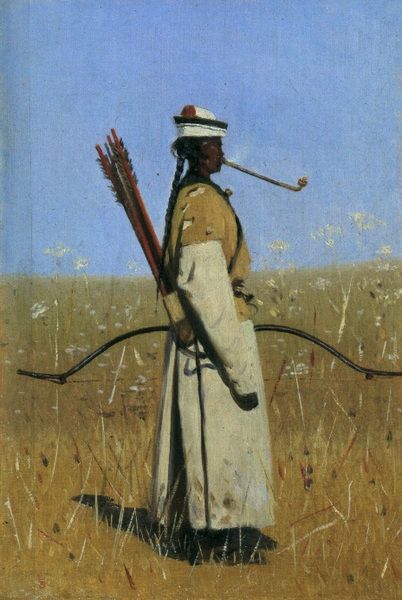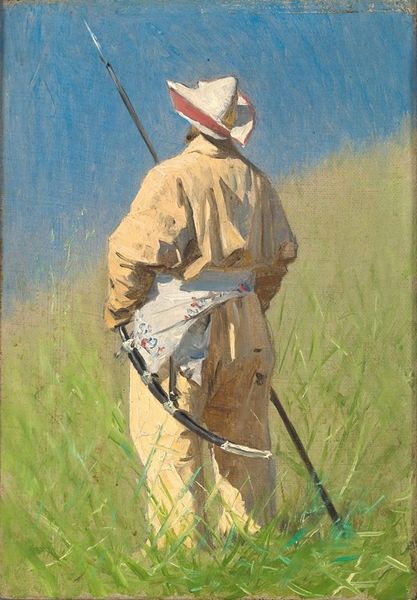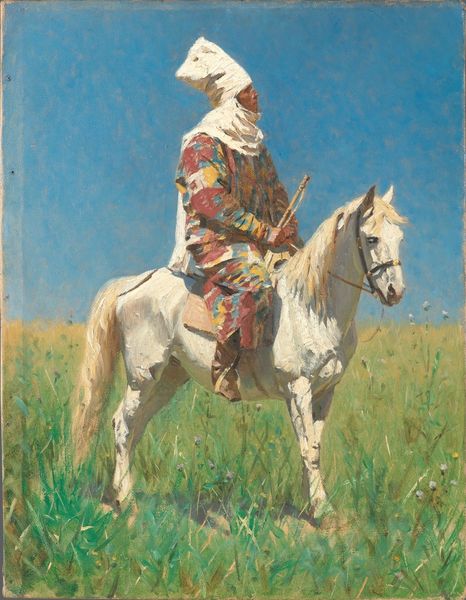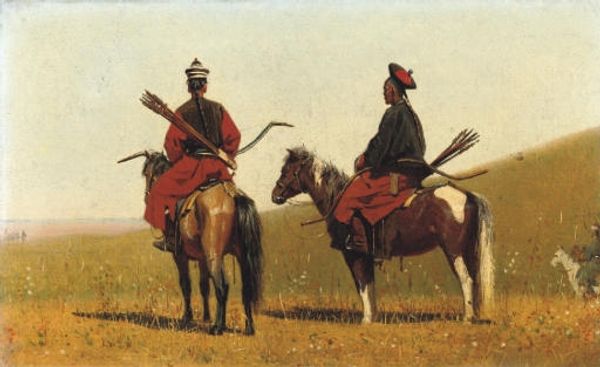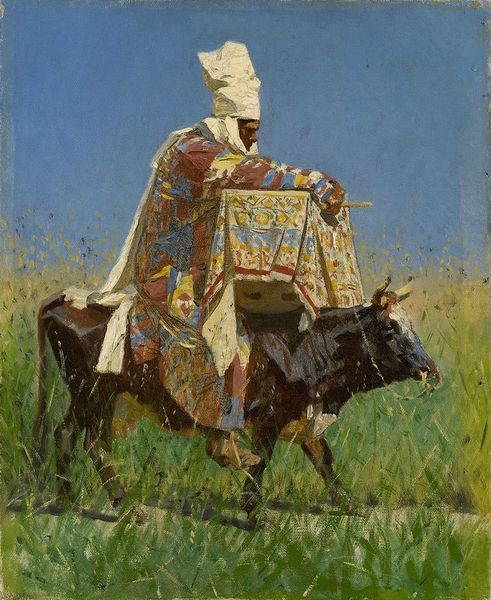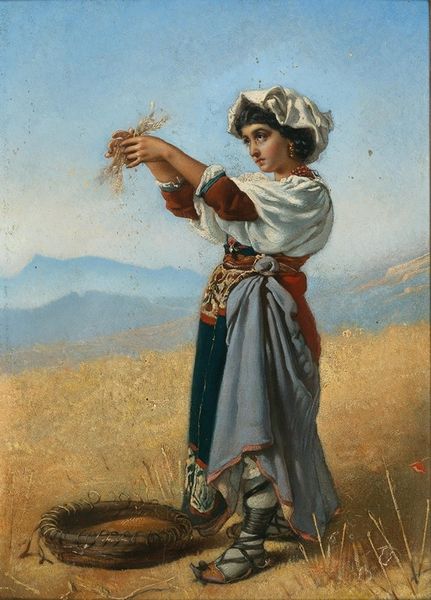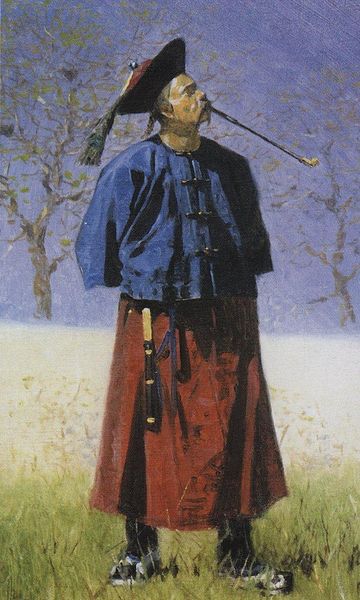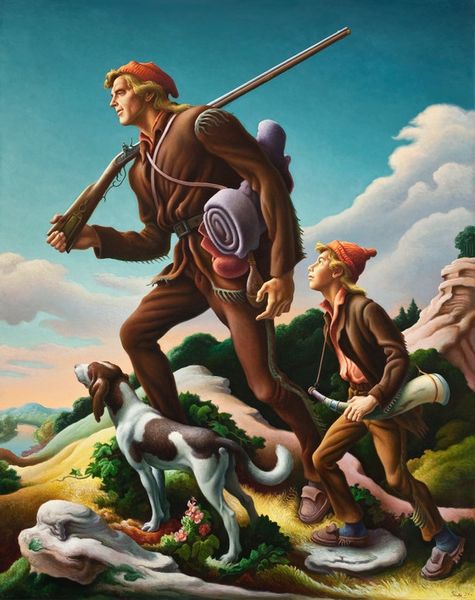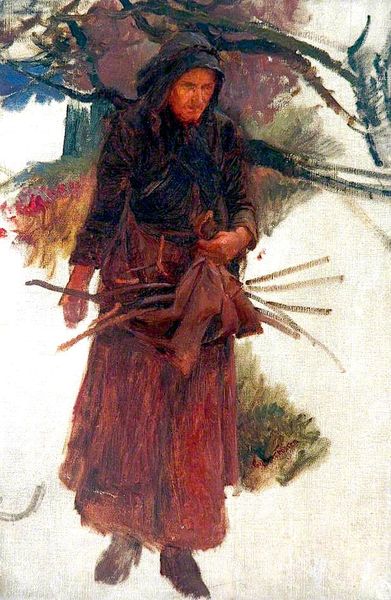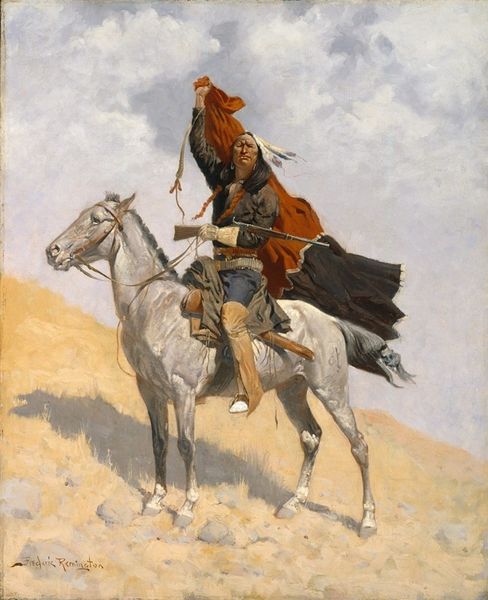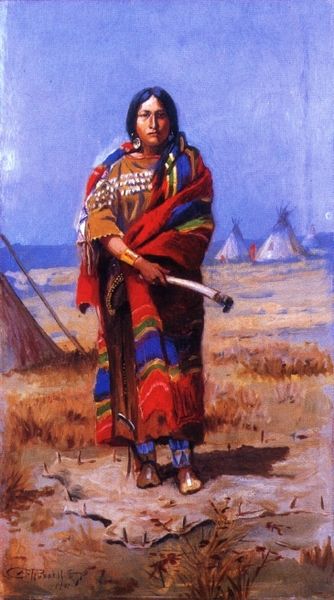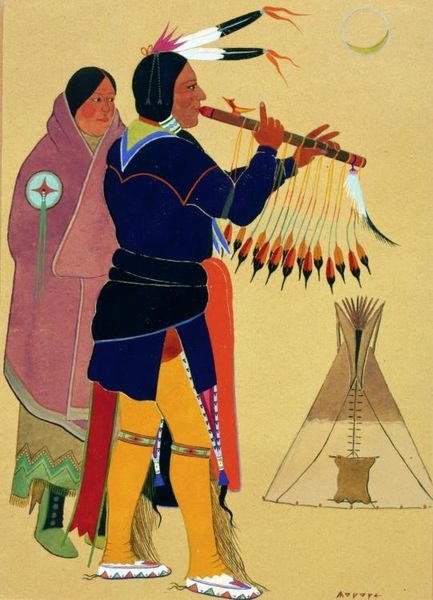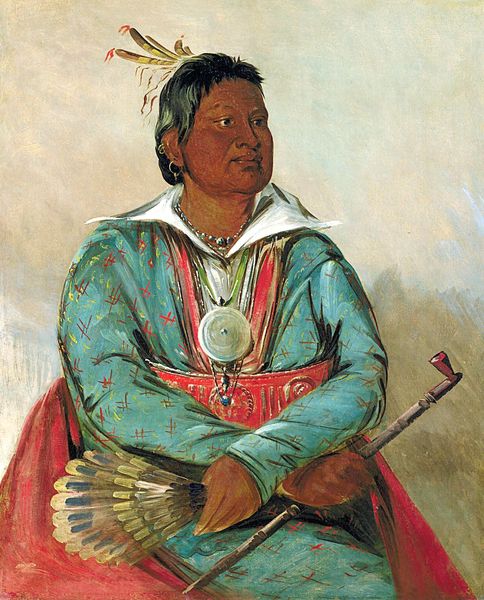
Copyright: Public Domain: Artvee
Curator: Standing before us, we have Vasily Vereshchagin’s “Bukhara Soldier,” painted in 1873. An oil on canvas depicting a soldier in traditional dress standing in a field. Editor: My initial impression is one of poised stillness. There’s something both serene and formidable in the archer’s stance against the open sky. He almost blends in the field of grass behind him. Curator: Indeed, Vereshchagin painted this during a time of intense Russian expansion into Central Asia. We have to view this work within the framework of colonialism, considering the impact of Russian imperialism on the region’s cultural and political landscape. Editor: Absolutely. Visually, the artist renders this archer in detail. Note the quiver filled with arrows and even his layered traditional garb. The bow itself, when looked at closely, appears ready to launch. Curator: The choice of attire speaks volumes, doesn’t it? Red for danger and importance is present on his overcoat, with some blue accents added, what statements do the uniform and weaponry make regarding identity, resistance, and the preservation of culture amidst political turmoil? Editor: Precisely. The soldier’s red coat carries connotations beyond mere decoration, a powerful declaration of defiance and an embrace of cultural roots amidst change. Red, of course, also carries important meanings of power. Curator: Considering the context of Russian expansion, the very act of portraying a Bukhara soldier becomes a form of resistance, preserving a visual memory. What are your thoughts on that? Editor: I agree entirely. In that light, even the quiver’s design or the craftsmanship of the bow acts as significant visual evidence to be contemplated. They are coded with intention. Curator: In the face of Russian domination, representation becomes resistance. That’s something worth considering today. Editor: The legacy of “Bukhara Soldier” is a potent reminder that our visual history is steeped in meaningful symbolism—it reminds us to see culture, history, and even memory at play.
Comments
No comments
Be the first to comment and join the conversation on the ultimate creative platform.
